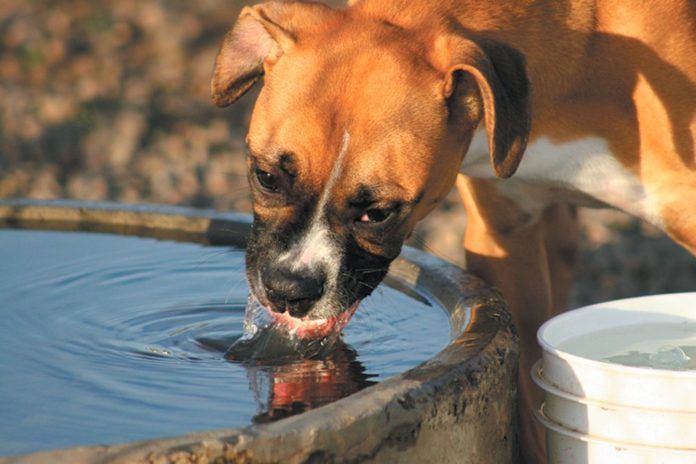
© Chrisjo | Bigstock
It is always something of a financial challenge having a diabetic pet,” says Orla Mahony, DVM, a veterinarian at Tufts’s Foster Hospital for Small Animals.
“There is the cost of not being able to board your pet at his usual facility because the staff there may not have the expertise to give insulin,” so you may have to go somewhere more expensive to make sure your dog can get his twice-daily shots while you’re away. There is also the cost of the syringes for injecting the insulin, and the cost of the frequent monitoring of his blood sugar levels at the veterinarian’s office to be certain they remain in the correct range. This is important in order to avoid organ damage and other complications of diabetes.
And depending on what type of insulin he needs, costs can become downright crippling. Some insulins on the market today cost $300 to $400 for a vial with 1,000 units — enough for only about 30 days for a 50-pound dog. “That’s certainly a big issue if it’s not covered by insurance,” says Dr. Mahony, who specializes in diabetes and other hormonal diseases, which fall under the heading of endocrinology. No wonder she cites a study that indicates one in 10 people put down their dog upon getting a diagnosis of diabetes, and another one in 10 opt for euthanasia a year after diagnosis. Cost is one of the difficulties owners confront.
The challenges are becoming more common, as “the prevalence of diabetes has gone up,” Dr. Mahony reports.
Why insulin can be so expensive
“There are some basic insulins that have been around for a long time and are generally quite affordable,” Dr. Mahony says — as little as 50 cents a day for a 25-pound dog.
The problem is that not all insulins work for all dogs to keep blood sugar levels in check. It can take some trial and error, with certain dogs needing to go to an insulin developed for people, which can be much more expensive. Newer forms of insulin are coming on the market all the time, and the newer the preparation, the more expensive it tends to be.
Keeping down the expense
While diabetes can seem like a budget breaker in some cases, Dr. Mahony says, “I would not want people to give up. Diabetes is quite a treatable disease” and can often be made significantly more affordable with the right strategies.
1. Check out prices at Walmart. An insulin called Novolin NPH is “the cheapest on the market,” Dr. Mahony says. At Walmart, it costs $25 for 1,000 units, she says. And even a 50-pound dog generally won’t need more than 23 to 46 units a day, meaning the bottle will last anywhere from three to six weeks, or even a little more.
2. Look at GoodRX.com, a website that allows you to do comparison shopping. When we checked, a type of insulin called Humalog cost $68 at Walgreen’s or Rite Aid but $122 at CVS or Target. The site makes for great apples-to-apples comparisons.
3. While a pharmacy for people might tell you to discard any insulin not used within a month’s time, talk to your veterinarian before doing so. “We tell people to refrigerate the insulin,” Dr. Mahony says, “and if it’s not discolored after a month, don’t toss it. Just make sure you use a new syringe each time to help insure the product remains sterile.”
4. Ask your veterinarian about using a machine that allows you to monitor your pet’s blood sugar levels at home rather than at the doctor’s office. One that Tufts recommends is the Veterinary alphaTRAK glucometer. Your veterinarian can interpret the results and help you optimize insulin dosing and diet adjustments.
Often, the Problem Is Not the Expense But the Time Involved
Frequently, it is not budgetary concerns that put off owners when it comes to taking care of a dog with diabetes but, rather, the necessary commitment to a lifestyle change. Ideally, a dog with diabetes will get his shot approximately every 12 hours, with a margin of no more than an hour or two in order not to interfere with blood sugar regulation. “If you fly for business or have to stay late at work one night or like to sleep late on the weekend,” that can throw everything off, says Tufts small animal veterinarian Orla Mahony, DVM.
“Once the shock of the new lifestyle wears off,” Dr. Mahony points out, “a lot of people take it in stride” and just do what they have to do to take care of their beloved pet. “They learn to be flexible to accommodate their dog’s needs.”
It’s a bigger problem for dogs at shelters, the doctor comments. If you already own and love a dog, chances are you’ll do whatever it takes to keep your pet well. But shelters have a hard time adopting out diabetic dogs because people don’t want to take on that twice-a-day commitment for an animal they’re not already in love with.





